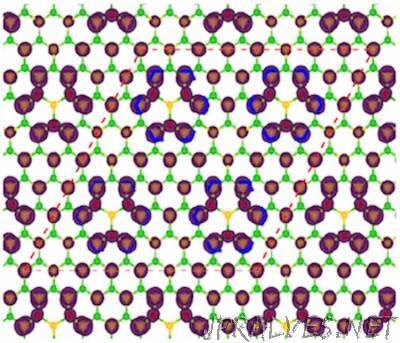Tags RICE.Edu
“A little fluorine turns an insulating ceramic known as white graphene into a wide-bandgap semiconductor with magnetic properties. Rice University scientists said that could make the unique material suitable for electronics in extreme environments. A proof-of-concept paper from Rice researchers demonstrates a way to turn two-dimensional hexagonal boron nitride (h-BN) – aka white graphene – from an insulator to a semiconductor. The magnetism, they said, is an unexpected bonus. Rice University graduate student Sruthi Radhakrishnan shows samples of pure hexagonal boron nitride and fluorinated hexagonal boron nitride. Fluorination turns the material known as white graphene, a common insulator, into a magnetic semiconductor that may be suitable for electronics and sensors in extreme environments. Because the atomically thin material is an exceptional conductor of heat, the researchers suggested it may be useful for electronics in high-temperature applications, perhaps even as magnetic memory devices. The discovery appears this week in Science Advances. “Boron nitride is a stable insulator and commercially very useful as a protective coating, even in cosmetics, because it absorbs ultraviolet light,” said Rice materials scientist Pulickel Ajayan, whose lab led the study. “There has been a lot of effort to try to modify its electronic structure, but we didn’t think it could become both a semiconductor and a magnetic material. “So this is something quite different; nobody has seen this kind of behavior in boron nitride before,” he said. The researchers found that adding fluorine to h-BN introduced defects into its atomic matrix that reduced the bandgap enough to make it a semiconductor. The bandgap determines the electrical conductivity of a material. “We saw that the gap decreases at about 5 percent fluorination,” said Rice postdoctoral researcher and co-author Chandra Sekhar Tiwary. The gap gets smaller with additional fluorination, but only to a point. “Controlling the precise fluorination is something we need to work on. We can get ranges but we don’t have perfect control yet. Because the material is atomically thin, one atom less or more changes quite a bit. “In the next set of experiments, we want to learn to tune it precisely, atom by atom,” he said.”
